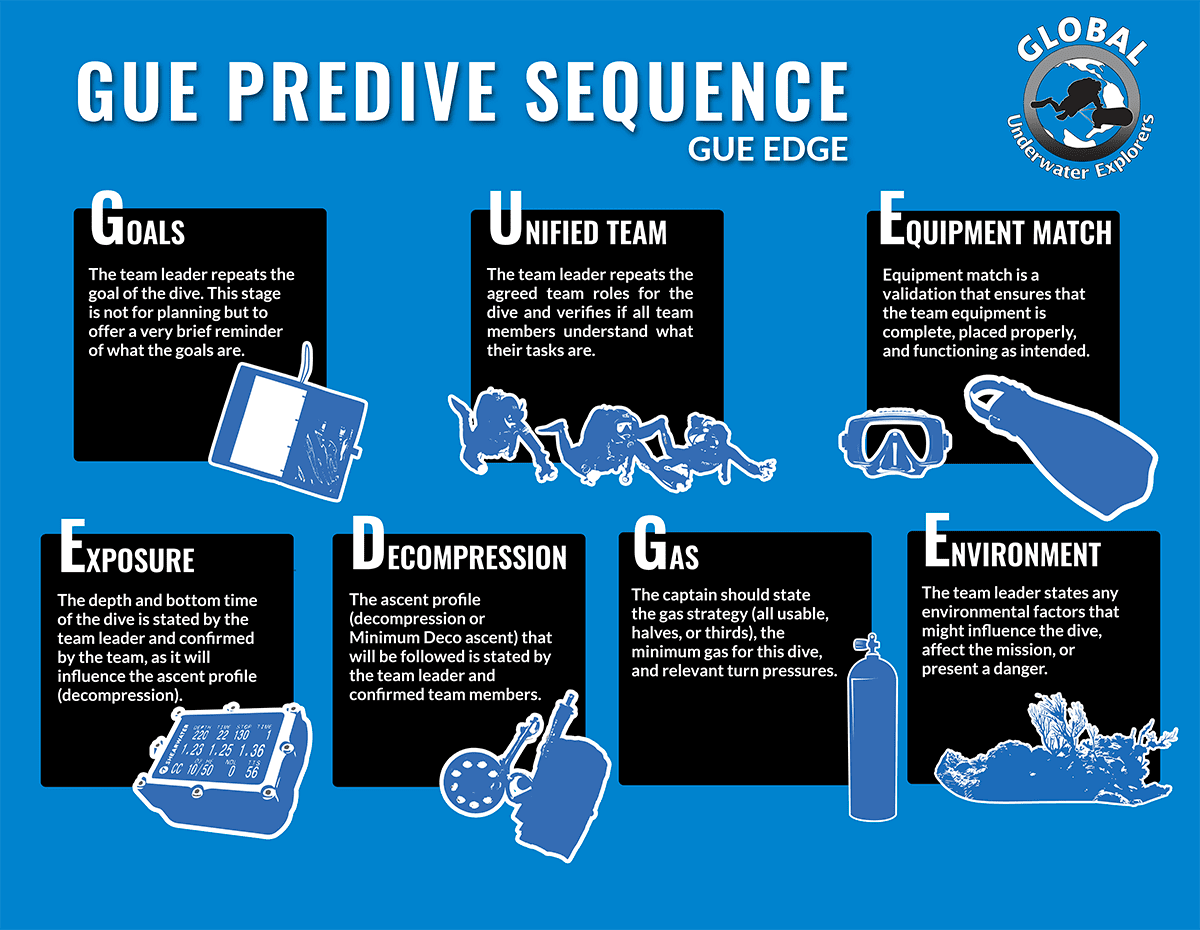Pre-Dive Checks: How to Ensure Gear & Buddy Readiness

Why Pre-Dive Checks Matter
A proper pre-dive check prevents gear-related failures before they happen. Whether you’re diving with a buddy or solo, running through a structured check ensures your air, equipment, and weight system are set up correctly before entering the water.
Several pre-dive check models exist, but they all aim to accomplish the same goal: verifying gear, gas, and buddy readiness. Below are the most common methods.
Standard Pre-Dive Check Models
BWARF (Used by Most Agencies, but Rarely in Practice)
- Buoyancy (BCD) – Is it set up and working?
- Weights – Are they installed and secured?
- Air – Is the tank on? Regulators working? PSI expected?
- Releases – Do you know how to remove your buddy’s gear in an emergency?
- Final OK – Confirm readiness.
ABCDE (Similar Concept, Different Order)
- Air – Tank on, regs working, PSI checked?
- BCD – Inflation/deflation, releases secured?
- Computer – Turned on and set correctly?
- Dive Equipment – Fins, mask, other gear?
- Enter the Water – Ready to go?
GUE-EDGE: A More Effective Pre-Dive Check

GUE-trained divers follow a more thorough team-based approach:
- Goals – What is the objective of the dive?
- Unified Team – Roles and formation.
- Equipment – Check each diver’s full gear.
- Exposure – Expected depth and time.
- Decompression – Plan for ascent.
- Gas – Minimum and usable gas strategies.
- Environment – Hazards, conditions, visibility.
This method is more extensive than what most recreational divers want, but it is excellent for all divers and the method I prefer.
For a deeper dive into GUE-EDGE, check out our detailed breakdown: GUE-EDGE Dive Planning.
Looking for a More Practical Buddy Check?
Many divers find BWARF and ABCDE too simplistic and GUE-EDGE too complex for recreational diving. If you're looking for a more effective pre-dive check that balances thoroughness with efficiency, check out the method I use with insta-buddies: